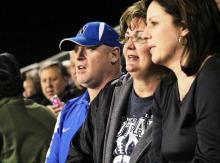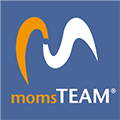
The following is a checklist of what experts say all sports parents need to know about sports-related concussions:
1. The signs and symptoms of concussion:
- symptoms (headache, nausea, vomiting, dizziness, visual problems, sensitivity to light/noise, balance problems);
- physical signs (loss of consciousness, unsteady gait/balance problems/dazed facial expression)
- impaired brain function (confusion, feeling mentally "foggy," feeling slowed down, difficulty concentrating and remembering a/k/a amnesia);
- abnormal behavior (change in personality, irritability, sadness, nervousness, more emotional, depression); and/or
- sleep disturbances (insomnia, drowsiness, sleeping less than usual, sleeping more than usual).
2. The importance of encouraging athletes to honestly self-report concussion symptoms and creating an environment in which athletes feel safe in self-reporting.
3. The importance of watching for delayed symptoms, including behavioral changes, and concentration and memory problems, which may only appear hours or even days after a strong blow to the body or head during practice or game action. Delayed symptom onset is especially common among children and teens.
4. The need to regularly and close monitor athletes during the first 24-48 hours after diagnosed concussion for signs of deteriorating mental condition suggesting a more serious brain injury which requires immediate hospitalization;
5. The importance of cognitive and physical rest in the first few days after concussion, including staying home from school;
6. The importance of a gradual return to school (now dubbed "return to learn"), and the possible need for academic accommodations.
7. The importance of being off all academic accommodations and completing a step-by-step, symptom-limited, exercise program before a concussed athlete is allowed to return to sports;
8. The dangers of continuing to play with concussion symptoms and returning to play too soon, before a child or teen's still-developing brain has fully healed, including increased risk of adverse short- and long-term, and even catastrophic injury.
9. The need for more conservative management of concussions in children and teens as compared to college-age athletes and adults.



